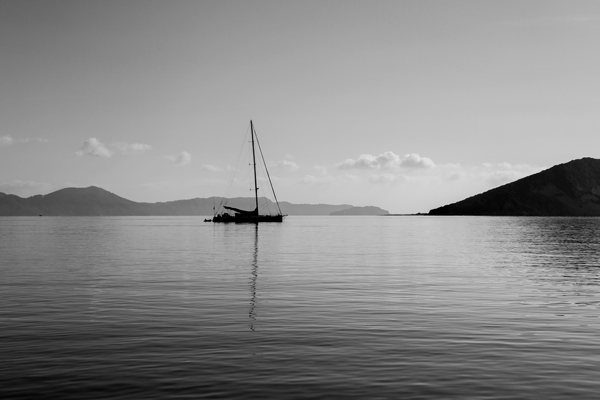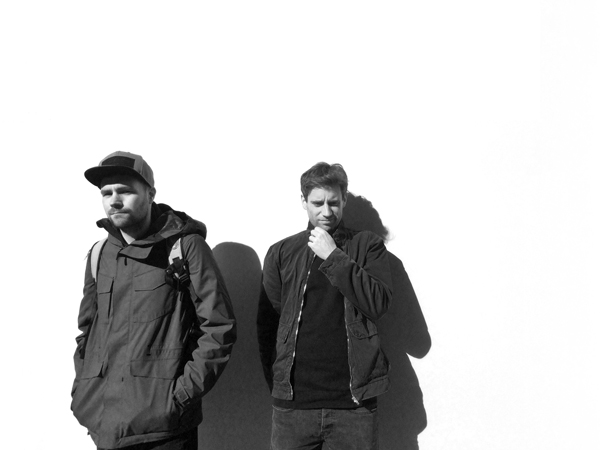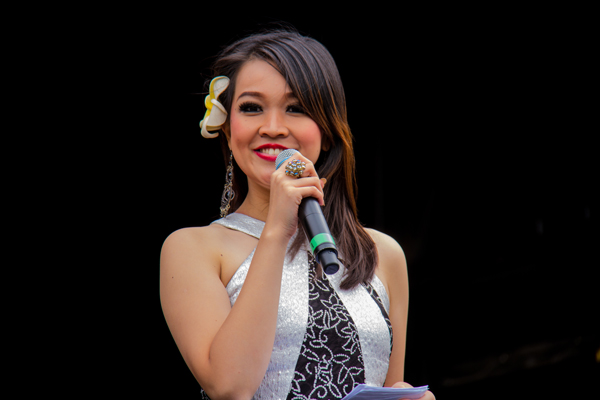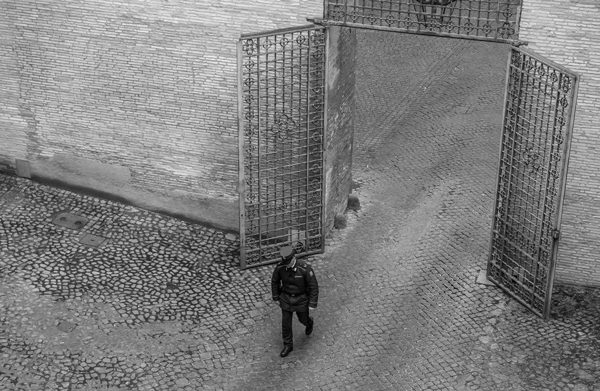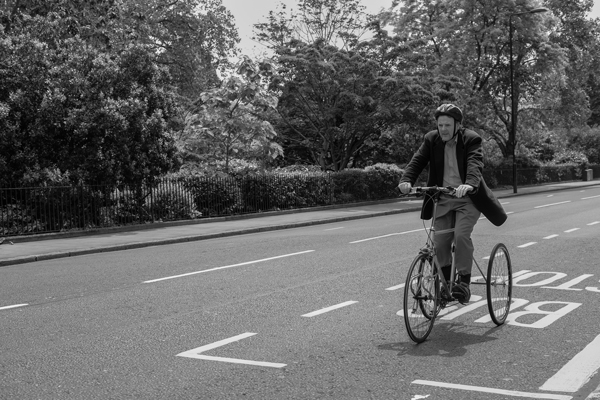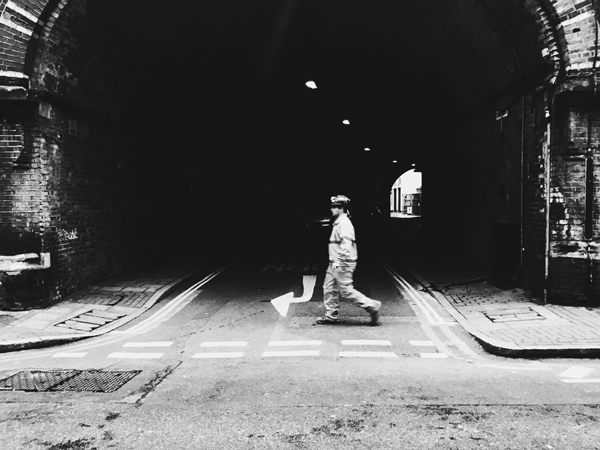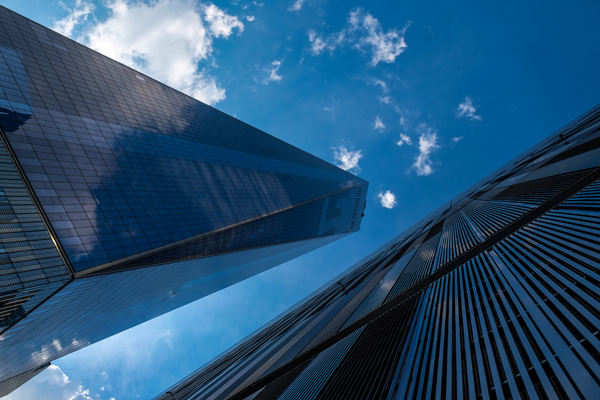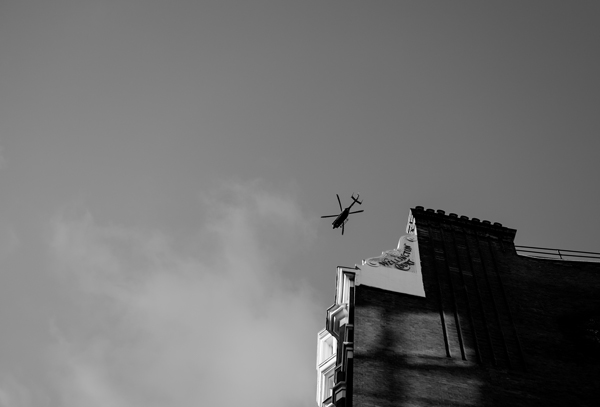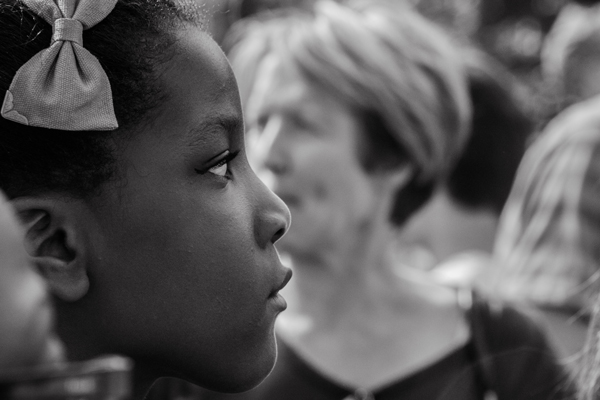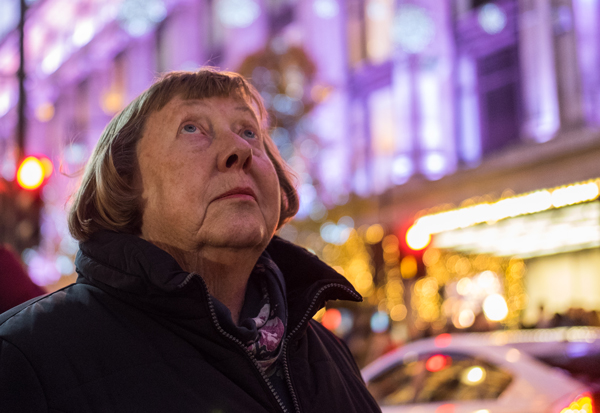Did you ever wonder how photographers create such powerful photos when the subject takes up so little space in the frame? They’re simply using Negative Space – a powerful composition technique which helps draw attention to your subject whilst creating a sense of poise and balance. In this article, you’ll learn how to use this technique to create evocative images of your own.
What Is Negative Space?
To understand the concept of negative space you must first understand what positive space is. That is, the subject or subjects in your image, or your focal points. Conversely, negative space is essentially the areas around your subject, or between multiple subjects. For example, in the photo below, the two guys are our subjects, and therefore occupy the Positive Space. Everything else, i.e. the expanse of white background, is the Negative Space.
Understanding this distinction is important as it allows you to evaluate the spaces in your environment. You can then use these spaces creatively to enhance your images.
Next, we’ll look at specific ways you can use negative space to take your images to the next level.
1. Draw Your Viewers Eye To Your Subject
Good photography hinges on the ability of the photographer to help viewers make sense of their images.
Portraits with their shallow depth of field help you to hone in on what’s really important in the image. Using negative space greatly enhances the sense of isolation of the subject from the background.
Negative space emphasizes and defines the main subject of a photo and helps to draw the viewer’s eye to it. By decluttering the composition you provide the image with space for the subject to breath and engage the viewer.
2. Create Compositional Balance Using Negative Space
In cookery a perfect meal has a balance between different types of flavors; the salty balances the sweet, the acid cuts the fat. The same is true of well-composed photographs; they balance different elements.
There are no hard and fast rules for photography, but a good rule of thumb is that the larger the individual subject the more space you should have around them. This doesn’t have to be evenly spread, and experimenting with different allocations of space can really increase your versatility as a photographer.
3. Use Negative Space To Convey A Sense Of Scale
Your use of space in an image can create a sense of inclusion or exclusion. Using a significant amount of negative space can help you evoke a sense of isolation, which can be used to highlight the scale of subjects against their background.
When shooting from a height, you can use the preconceptions of your viewer about the spaces around your subject to really enhance a sense of human versus environment.
Keeping the shot reasonably free from otherwise distracting elements can really magnify this effect making negative space an excellent tool for emphasizing the contrast.
4. Use Negative Space To Introduce Movement Into Your Image
Introducing movement into, or out of, the frame can create a sense of anticipation and dynamism. You can use negative space to suggest movement, even in a still image. Placing your subject near the edge of the frame can suggest a direction of travel. Which edge you use can have an impact on how the subject and photo is interpreted by your viewer.
A subject entering the frame can give a very different feel to the image compared to one they’re about to exit. The latter gives a sense of urgency to the image, the former provides more thinking room. Centralized figures can sometimes take on an air of ambiguity.
Find a blank wall with a decent amount of pedestrian traffic and wait for subjects to pass. Then, try different framing shots and think about the final images. Also, try to craft a story in your head: Where are they going and where have they been? Posing these questions leads to further questions about the story behind the image and may help you in your composition choices. Tell the story you want without distractions, using negative space.
5. Create An Air Of Mystery
Use silhouettes or harsh tonal contrasts to emphasize the balance between dark and light areas of an image. This can create a dramatic composition and adds a sense of mystery for the viewer.
A good technique to exploit this air of mystery is to shoot against a sunny sky. Exposing your shot for the bright sky will create heavy silhouettes effectively turning both the subject and background into contrasting negative spaces and creating a much more ambiguous and mysterious image.
This works best when there’s a clear subject and a large amount of negative space. If an image is too busy, this technique causes a loss of focus in the image.
6. Create Negative Space By Shooting From A Different Perspective
When you start to really look at the world around you with a photographic mindset, you’ll start to see shapes, patterns, and angles everywhere. As a result, this creative approach becomes untethered from what an object is, and you begin to see the patterns it creates against other objects and the negative space between them.
One way to bring negative space into your photos is to shoot from very low or very high vantage points. This creates interesting spaces between objects, and the subjects can become exaggerated new landscapes. This can give quite abstract and textural results.
Conclusion
Negative space provides the opportunity for bringing contrasts to your photo. For example, the contrast between the subject and the space around it, or between light and the darkness, or colors and shapes. Where and how to use it is up to you and how you think it’s best applied.
There are no hard-and-fast rules about exactly how much of your scene should be given over to negative space. For example, the negative space doesn’t have to be plain – it can simply be out of focus. So, the right shot on a busy street taken with a shallow depth of field can bring the same benefits we’ve discussed above.
These techniques are ones you should have in your toolkit as a photographer, however, try not to get too stuck on one technique. So, experiment with the space around your subject, play with the composition and use those elements to shape your story. As long as you can create a balance between the positive and negative space you have every chance of elevating your photos to the next level.

